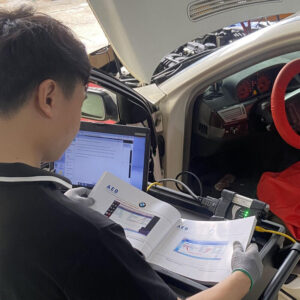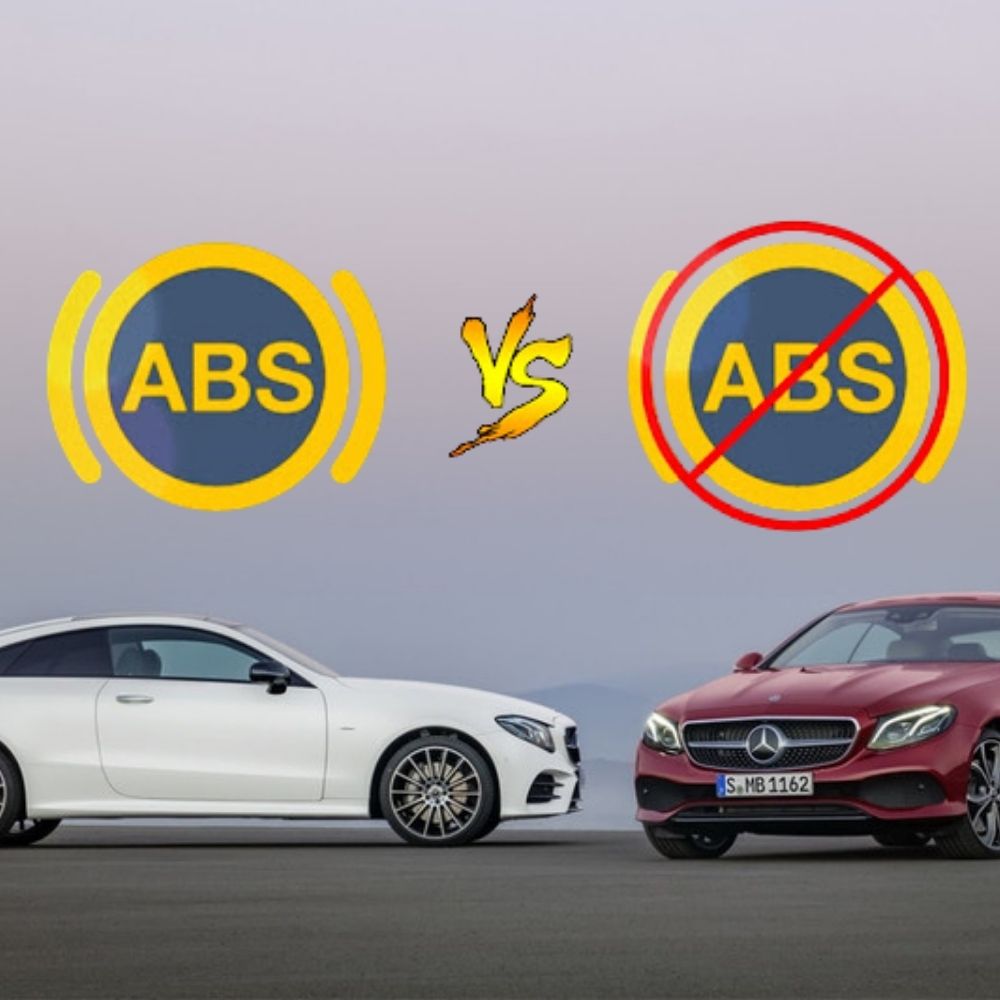
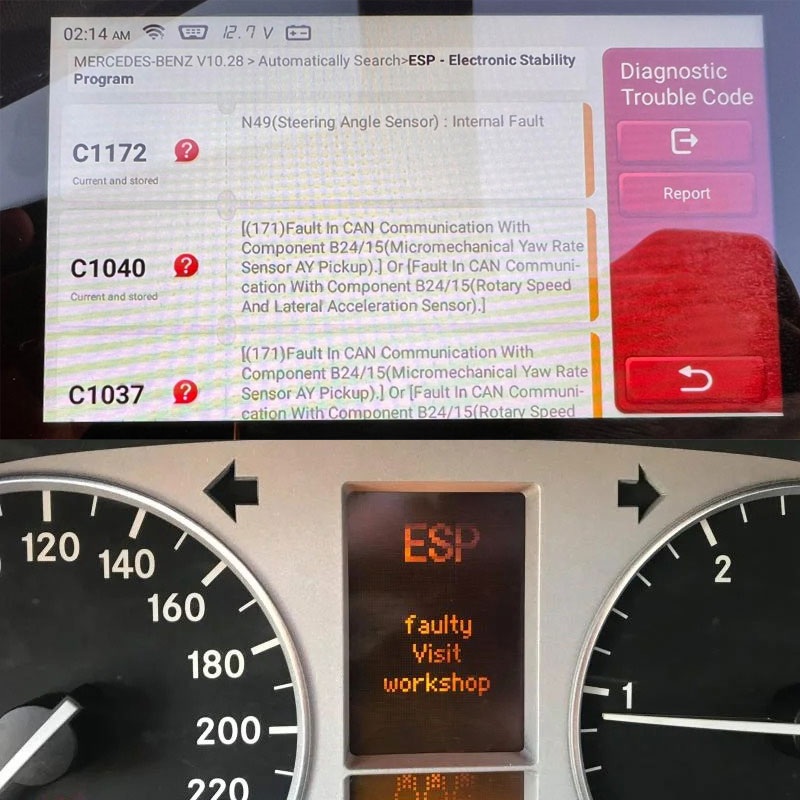
How to Fix C1172 Mercedes Fault Code
Contents
- 1. Understanding the C1172 Mercedes Fault Code
- 2. Symptoms of C1172 Mercedes Fault Code
- 3. Models and Components Commonly Affected
- 4. Diagnostic Steps for C1172 Mercedes-Benz Fault Code
- 4.1. Perform Basic Steering Angle Sensor Reset
- 4.2 Professional Diagnostic Steps to Find The Root Causes
- 4.3 Common Diagnostic Findings: Patterns of Failure
- 5. Repair Options for the Mercedes C1172 Fault
- 5.1 Sensor Replacement: The Primary Course of Action
- 5.2 Critical Post-Replacement Procedures: Initialization and Calibration
- 5.3 Alternative Repair Considerations: When Replacement Isn’t the Only Answer
- 6. Navigating Costs and Complexity: Understanding the Financial and Technical Aspects
- Final Thoughts on Fixing C1172 in Mercedes-Benz
- Need Expert Help? Contact AutoExplain!
Experiencing a C1172 Mercedes fault code can be a little unsettling, but don’t worry, autoexplain.com is here to provide you with a friendly and comprehensive guide to understand and address this steering angle sensor issue, ensuring your Mercedes-Benz is back on the road smoothly. This guide will illuminate the intricacies of this diagnostic trouble code, offering clear steps for diagnosis and effective repair strategies. Let’s explore the nuances of this Mercedes-Benz system fault together.
1. Understanding the C1172 Mercedes Fault Code
The C1172 diagnostic trouble code in your cherished Mercedes-Benz signifies an internal fault within the steering angle sensor (often designated as component N49). This vital component plays a pivotal role in your vehicle’s Electronic Stability Program (ESP), a sophisticated system designed to keep you safe by preventing skids and maintaining control during challenging driving conditions . When the steering angle sensor malfunctions, the ESP system may not receive accurate information about the driver’s intended steering direction, leading to a cascade of potential issues.
This particular fault code, Mercedes C1172 error code, points specifically to an internal electronic or mechanical breakdown within the sensor itself, rather than an external issue like a wiring problem or a simple need for recalibration. Often, this code appears in conjunction with other communication-related codes, such as C1036, which indicates a potential problem in the communication pathway with the steering column module (N80). Recognizing these associated codes can provide a more holistic view of the underlying problem.
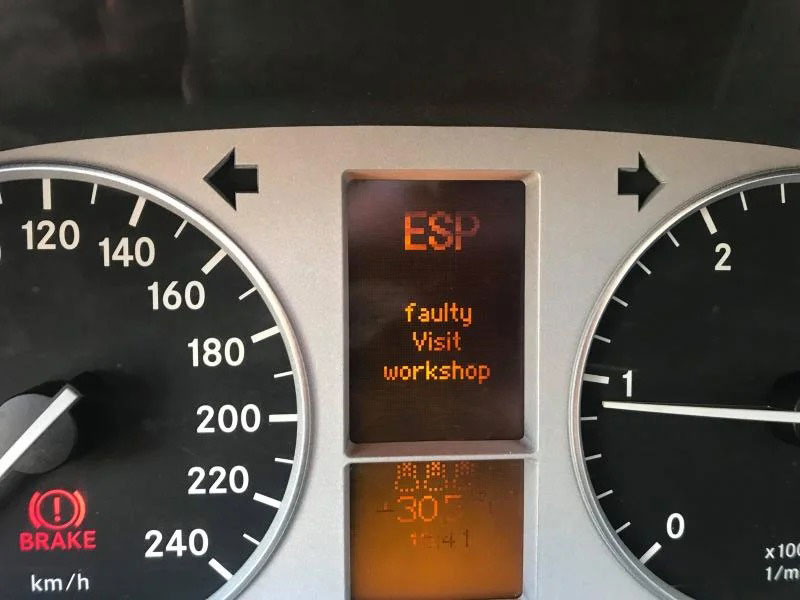
2. Symptoms of C1172 Mercedes Fault Code
When the steering angle sensor in your Mercedes-Benz encounters an internal fault, several warning signs may illuminate on your dashboard and affect your vehicle’s handling. Being aware of these symptoms can help you identify the issue promptly and seek the necessary attention. Common indicators associated with the C1172 diagnostic code Mercedes include:
-
Illuminated ESP Warning Light: The most frequent and direct symptom is the appearance of an “ESP defective please visit workshop” warning message on your instrument cluster. This serves as a clear indication that the ESP system is not functioning correctly due to the steering angle sensor malfunction.
-
“ESP Not Available” or “ESP Visit Workshop” Messages: Along with the warning light, your vehicle’s information display might show specific messages like “ESP not available” or “ESP visit workshop,” further emphasizing the issue with the stability control system.
-
Deactivated Traction Control System: As the ESP system relies on accurate steering angle data, a faulty sensor can lead to the deactivation of the traction control system. You might notice a separate warning light for traction control or experience a lack of intervention when wheel slip occurs.
-
Fluctuating Warning Lights Based on Steering Wheel Position: Interestingly, the warning lights might appear or disappear, or their intensity might change depending on the position of your steering wheel. This intermittent behavior often hints at an internal fault within the sensor where the connection or reading becomes unreliable at certain angles.
-
Intermittent Functionality with Freezing Readings: A key characteristic of the C1172 Mercedes Benz fault is its often intermittent nature. The steering angle readings might appear normal initially when scanned with a diagnostic tool, but then suddenly freeze after a short period of operation or when the steering wheel is turned [Source: Independent Mercedes-Benz Repair Specialists]. This behavior strongly suggests an internal sensor failure rather than a simple calibration problem.
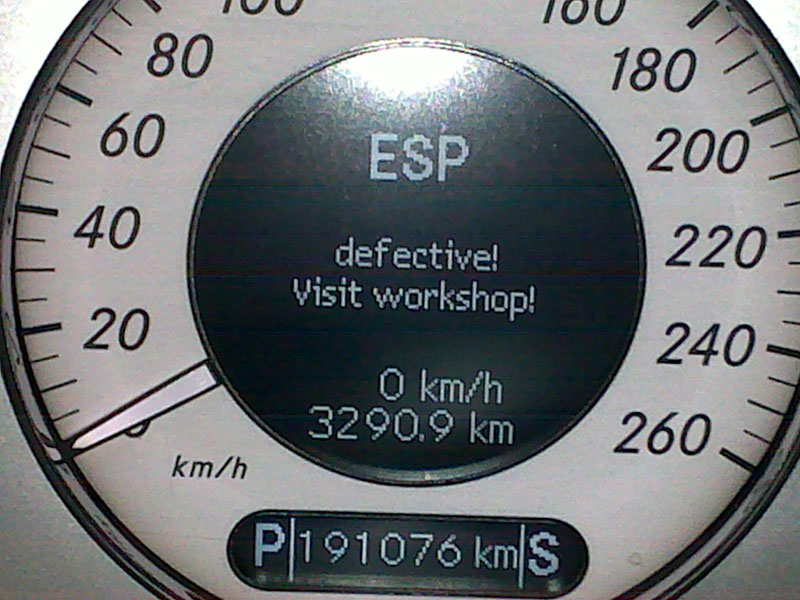
3. Models and Components Commonly Affected
The C1172 trouble code is not isolated to a single Mercedes-Benz model. Several popular series have shown a higher incidence of this particular steering angle sensor issue. Understanding which models are more prone to this fault can help mechanics and owners anticipate potential problems. Commonly affected Mercedes models include:
-
C-Class (W203 Series): Especially models like the C180, C200, and C220 from this generation have frequently reported C1172 errors.
-
SLK Models: Including the SLK 280 variant, these sporty roadsters have also shown susceptibility to steering angle sensor failures indicated by this code.
-
ML Series Vehicles: Certain models within the Mercedes-Benz ML-Class SUV range have also been known to experience this issue.
The steering angle sensor itself is typically located on the steering column, directly behind the steering wheel. In most Mercedes-Benz vehicles, it’s either integrated within or positioned very close to the clockspring assembly (also known as the contact spiral or air bag slip ring). The clockspring is a crucial component that maintains the electrical connection to the steering wheel-mounted controls (like audio controls and cruise control buttons) and, most importantly, to the driver’s airbag, regardless of the steering wheel’s rotational position [Source: Haynes Repair Manuals for Mercedes-Benz]. Due to this integration, a fault within the steering angle sensor might sometimes necessitate the replacement of the entire clockspring assembly.
4. Diagnostic Steps for C1172 Mercedes-Benz Fault Code
When your Mercedes-Benz displays symptoms suggestive of a C1172 fault, a thorough and systematic diagnostic approach is crucial to confirm the issue and avoid unnecessary replacements. Here’s a step-by-step guide for tackling this problem:
4.1. Perform Basic Steering Angle Sensor Reset
Before diving into complex diagnostics, it’s always wise to start with the simplest potential solutions. In the case of steering angle sensor issues, attempting a basic initialization or recalibration procedure can sometimes resolve temporary glitches. Follow these steps:
-
Start the engine of your Mercedes-Benz.
-
Turn the steering wheel slowly but fully to the left until it reaches the lock position. Hold it there for approximately 2 seconds.
-
Next, turn the steering wheel slowly and fully to the right until it reaches its lock position. Hold it for another 2 seconds.
-
Repeat this full left-to-right and right-to-left steering cycle 2 to 3 times.
-
Finally, return the steering wheel to the center position and ensure the wheels are pointing straight ahead
After performing this procedure, check if the ESP warning light or messages have disappeared. If the warning persists, it’s a strong indication that the C1172 fault is not a simple calibration error and requires further investigation using professional diagnostic equipment.
4.2 Professional Diagnostic Steps to Find The Root Causes
For a definitive diagnosis of the C1172 Mercedes C1172 diagnostic code, utilizing professional-grade diagnostic tools specifically designed for Mercedes-Benz vehicles is essential. A skilled technician will typically follow these steps:
-
Verify Wheel Alignment: Although not directly related to the sensor’s internal fault, an incorrect wheel alignment can sometimes trigger ESP-related warnings. Ensure that your vehicle’s wheels are properly aligned when driving straight ahead [Source: Tire and Alignment Industry Standards].
-
Scan for Related Diagnostic Trouble Codes: A comprehensive scan of your vehicle’s control units will reveal all stored fault codes. Pay close attention to any accompanying codes, particularly C1036 (indicating communication issues with the steering column module N80) or any other ESP-related faults. The presence of multiple codes can provide valuable clues about the underlying problem.
-
Check Live Data Readings from the Steering Angle Sensor: Using a diagnostic scanner such as Mercedes C4, C5 or C6 and diagnostic software such as Xentry Openshell or Xentry Passthru to access live data from the Mercedes-Benz ESP system, the technician will monitor the steering angle values in real-time as the steering wheel is turned. Key observations during this step include:
-
Looking for Freezing Values: If the steering angle reading works correctly for a short period and then suddenly freezes at a particular value, it strongly suggests an internal sensor malfunction.
-
Identifying Sudden Jumps or Inconsistent Readings: Erratic or illogical changes in the steering angle data as the wheel is smoothly turned also point towards a faulty sensor.
-
Verifying Smooth Transitions: In normal operation, the steering angle values should change smoothly and proportionally with the steering wheel movement. Any deviations from this indicate a potential problem.
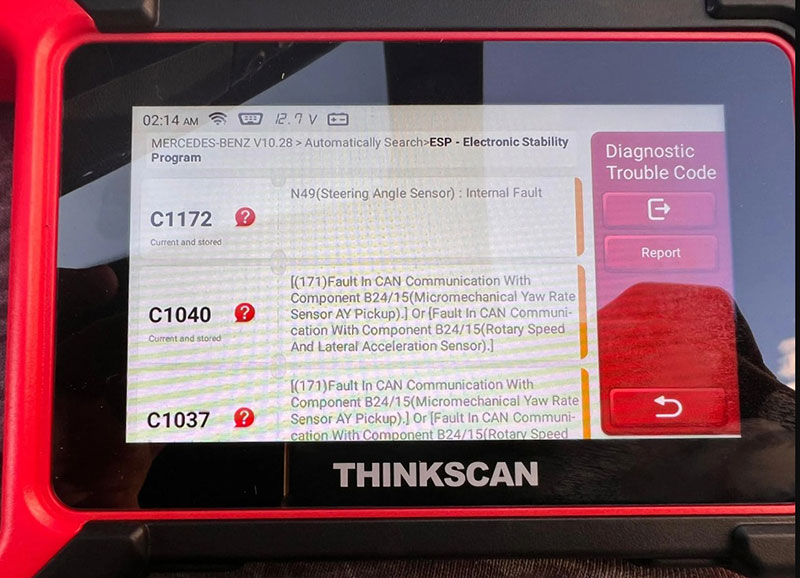
Use Diagnostic Tools to Find The Root Causes of C1172 Mercedes Fault Code -
-
Electrical Testing (When Appropriate and Equipped): In some cases, and if the technician has the necessary tools and expertise, electrical testing of the steering angle sensor and its associated wiring might be performed. This could involve:
-
Checking the Power Supply: Verifying that the sensor is receiving the correct voltage (often through fuses like #10 and #22 in Mercedes systems, but this can vary by model).
-
Verifying Ground Connections: Ensuring that the sensor has a proper and stable ground connection.
-
Testing the Signal Wire Continuity: Checking the integrity of the wiring between the steering angle sensor and the ESP control module for any breaks or shorts.
-
4.3 Common Diagnostic Findings: Patterns of Failure
Based on extensive experience and analysis of numerous cases involving the C1172 Mercedes issue, several recurring patterns have emerged during the diagnostic process:
-
Initial Correct Readings Followed by Freezing: As highlighted earlier, the most common finding is that the steering angle sensor initially reports accurate data, but after a few minutes of vehicle operation or after the steering wheel has been turned, the readings abruptly freeze at a fixed value .
-
Readings Stuck at a Default Failure Value: In some instances, the diagnostic tool might show a steering angle reading of exactly 1023.5 degrees (or a similar fixed, non-sensical value) even when the steering wheel is stationary. This is often a tell-tale sign that the sensor has internally failed and is reporting a default error value.
-
Failure to Respond to Initialization Despite Replacements: There are documented cases where even after multiple attempts to replace the steering angle sensor, the new sensor fails to initialize properly, suggesting a potential issue beyond just the sensor itself, such as a problem with the wiring harness or the ESP control module .
-
Intermittent Warnings Correlating with Steering Direction: Technicians have observed that the ESP warning light might appear only when the steering wheel is turned to a specific side or beyond a certain angle, indicating a potential internal break or short within the sensor that manifests at particular rotational positions.
5. Repair Options for the Mercedes C1172 Fault
Once the diagnostic process confirms an internal fault within the steering angle sensor (Mercedes C1172 problem), the most common and effective solution is typically the replacement of the sensor. However, proper procedures and post-replacement steps are crucial for a successful repair.
5.1 Sensor Replacement: The Primary Course of Action
If all indications point to a failed steering angle sensor, replacement is generally necessary to resolve the C1172 Mercedes C1172 system fault.
-
Selecting the Correct Replacement Part: Ensuring you obtain the exact correct part number for your specific Mercedes-Benz model and year is paramount. Using an incompatible sensor can lead to further issues and prevent the system from functioning correctly [Source: Mercedes-Benz Electronic Parts Catalogue (EPC)]. Your local Mercedes-Benz dealership or reputable aftermarket parts suppliers can help you identify the appropriate part.
-
Removal Procedure (General Steps): While specific steps might vary slightly depending on your model, the general procedure for removing the steering angle sensor typically involves:
-
Disconnecting the Battery Negative Terminal: This is a crucial safety step to prevent accidental airbag deployment or electrical shorts.
-
Removing the Steering Wheel Airbag: This usually involves carefully releasing retaining clips or screws (often using a T25 Torx bit) located on the back of the steering wheel. Exercise extreme caution when handling the airbag unit.
-
Removing the Steering Wheel: This typically requires a 10mm hex key or a specialized steering wheel puller tool. Mark the position of the steering wheel relative to the steering shaft before removal to ensure proper alignment during reinstallation.
-
Removing the Steering Angle Sensor: The sensor is usually located directly behind the steering wheel and is often integrated with the clockspring assembly. It is typically secured with small Torx screws (often T10). Carefully disconnect any electrical connectors attached to the sensor [Source: Mercedes-Benz Service Manuals].
-
-
Installation Considerations:
-
Handle with Care: The new steering angle sensor is a sensitive electronic component. Avoid dropping it or subjecting it to any physical stress.
-
Proper Orientation: Ensure that the new sensor is installed in the correct orientation as indicated by alignment marks or instructions provided with the part. Incorrect orientation can lead to calibration issues.
-
Secure Fasteners: Tighten all screws and fasteners to the torque specifications recommended by Mercedes-Benz to ensure proper seating and prevent loosening.
-
5.2 Critical Post-Replacement Procedures: Initialization and Calibration
Simply replacing the steering angle sensor is not enough. Proper initialization and sometimes calibration are essential for the ESP system to recognize and utilize the new sensor’s data accurately.
-
Basic Initialization (Manual Procedure): After installing the new sensor, attempt the same manual initialization procedure described in the diagnostic section (full lock-to-lock steering 2-3 times). This allows the system to learn the крайние положения of the steering.
-
Driving Initialization: In some cases, the ESP system might require a short drive to complete the initialization process. Driving in a straight line at a steady speed (typically between 15-25 mph) for a distance of 800 feet or more can help the system calibrate the sensor [Source: Mercedes-Benz Technical Service Bulletins].
-
Professional Initialization and Calibration (Using Mercedes Star Diagnostic System): For persistent ESP warnings or if the manual and driving initialization procedures are unsuccessful, professional calibration using the Mercedes-Benz Star Diagnosis (SDS) system is often necessary. This specialized software allows technicians to communicate directly with the vehicle’s control units, perform precise sensor calibration, and clear any remaining fault codes
5.3 Alternative Repair Considerations: When Replacement Isn’t the Only Answer
While sensor replacement is the most frequent remedy for a C1172 Mercedes Airmatic problem (though the code itself is not directly related to the Airmatic suspension, the diagnostic process might uncover other interconnected issues), other factors can sometimes contribute to or be mistaken for a steering angle sensor fault:
-
Clockspring/Contact Unit: As mentioned earlier, the steering angle sensor is often integrated with the clockspring. If the clockspring itself has an electrical fault or is damaged, it can interfere with the sensor’s operation or communication. In such cases, replacing the entire clockspring assembly might be necessary.
-
Wiring Harness Issues: Although less common for an internal sensor fault, a damaged, corroded, or pinched wire in the harness connecting the steering angle sensor to the ESP control module can disrupt signals and potentially trigger a C1172 code or related communication errors. A thorough inspection of the wiring harness is advisable, especially if replacement sensors fail to resolve the issue.
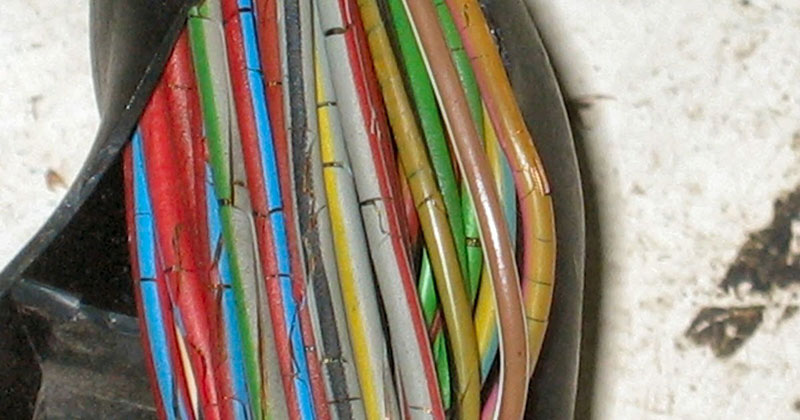
-
ESP Control Module Fault: In rare instances, the problem might not lie with the steering angle sensor itself but with the ESP control module’s ability to process the sensor’s signals. This is a less frequent occurrence, and usually, other more specific fault codes related to the ESP module would also be present [Source: Advanced Automotive Electronics Textbooks]. Thorough diagnostics are crucial to identify this root cause.
6. Navigating Costs and Complexity: Understanding the Financial and Technical Aspects
Addressing a C1172 Mercedes C1172 diagnostic code involves both financial considerations and a degree of technical expertise. Understanding the potential costs and the complexity of the repair can help you make informed decisions.
-
Parts Cost: The cost of a replacement steering angle sensor can vary depending on your Mercedes-Benz model, the supplier (OEM vs. aftermarket), and your geographical location. In European markets, prices might range from €44 to €222. In the United States, expect to pay approximately $100 to $370 for the part [Source: Online Automotive Parts Retailers]. If the clockspring also needs replacement, this will add to the overall parts cost.
-
Professional Repair Cost: If you choose to have the repair done by a professional mechanic at a Mercedes-Benz dealership or an independent European car repair shop, the total cost will include labor charges in addition to the part cost. Estimates for professional repair, including parts, labor, and post-replacement calibration, can range from $800 to $1000 [Source: Automotive Service Cost Estimators].
-
Labor Requirements: The time required for a skilled technician to diagnose and replace the steering angle sensor typically falls within the range of 2 to 4 hours. This can vary based on the specific model and the complexity of accessing the sensor [Source: Automotive Labor Time Guides].
-
DIY Difficulty: Attempting a DIY repair of a C1172 fault is generally considered to be of moderate difficulty. It requires specific tools, including Torx bit sets, potentially a steering wheel puller, and ideally a diagnostic scanner capable of reading Mercedes-Benz specific fault codes and performing basic initializations. Furthermore, working with safety-critical components like the steering wheel airbag requires caution and adherence to proper procedures. Incorrect handling can lead to accidental deployment and injury [Source: DIY Automotive Repair Forums].
Final Thoughts on Fixing C1172 in Mercedes-Benz
The C1172 Mercedes-Benz fault code is a serious issue affecting stability and traction control. In most cases, replacing the faulty steering angle sensor and properly calibrating it will resolve the problem. However, if the issue persists, additional diagnostics on the clockspring, wiring, or ESP module may be needed.
Need Expert Help? Contact AutoExplain!
If you’re still struggling with the C1172 Mercedes fault code, AutoExplain offers professional car diagnostic, coding, and programming support. We specialize in Mercedes-Benz systems and can provide remote assistance to get your vehicle back on the road.
📲 Contact us on WhatsApp: +1(936)2896695
Let our experts save you time and money with the right diagnostic approach. Reach out today! 🚗💡

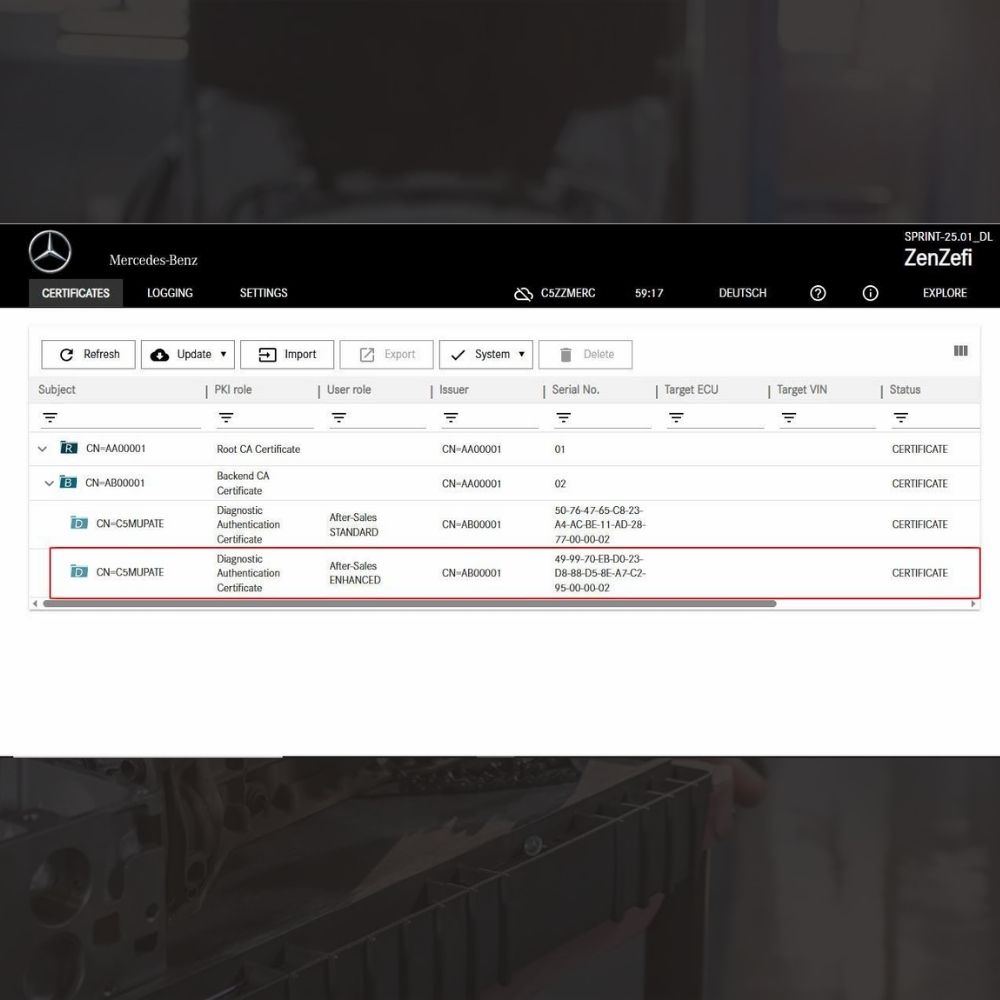
New Mercedes Car Coding Solution with ZenZefi certificate for DTS Monaco 9.02
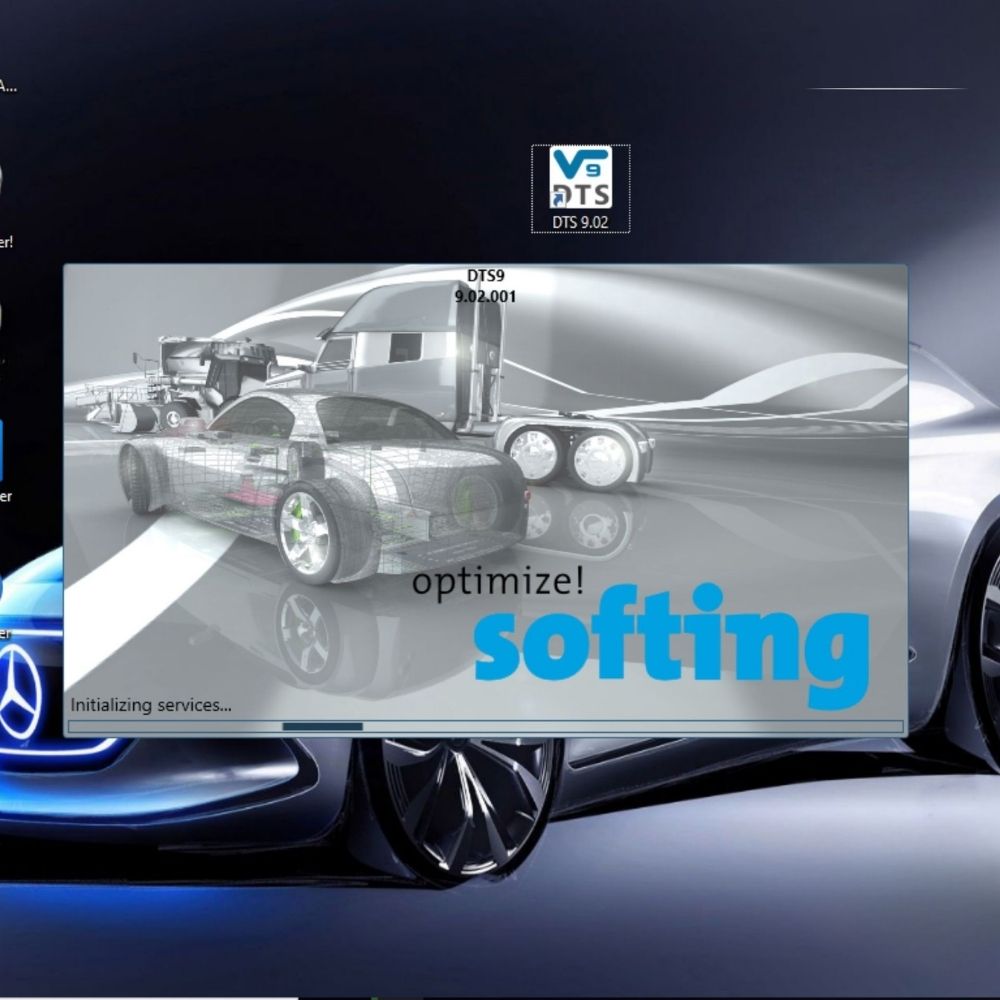
What is DTS Monaco? Key Functions of DTS Monaco Software
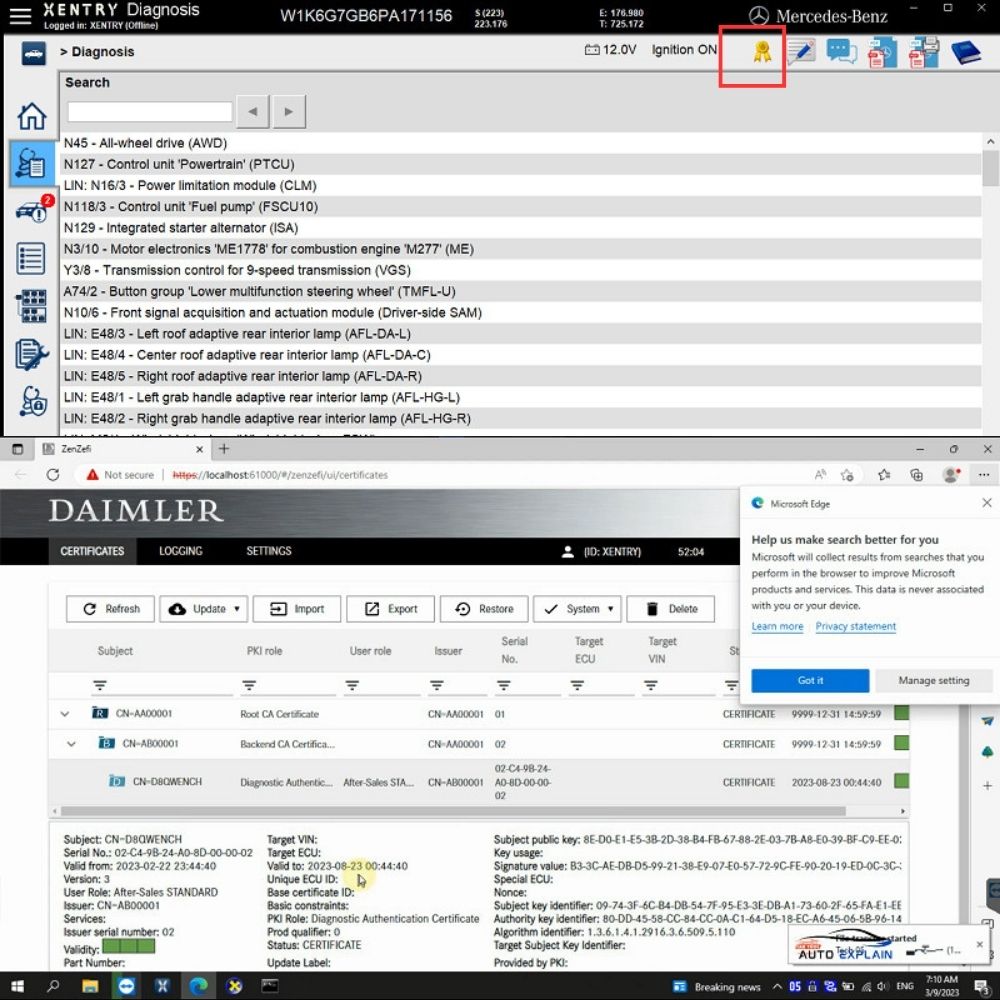
What is the Xentry Certificate Zenzefi? Why You Need It, and When It Is Required?



New Mercedes Car Coding Solution with ZenZefi certificate for DTS Monaco 9.02



